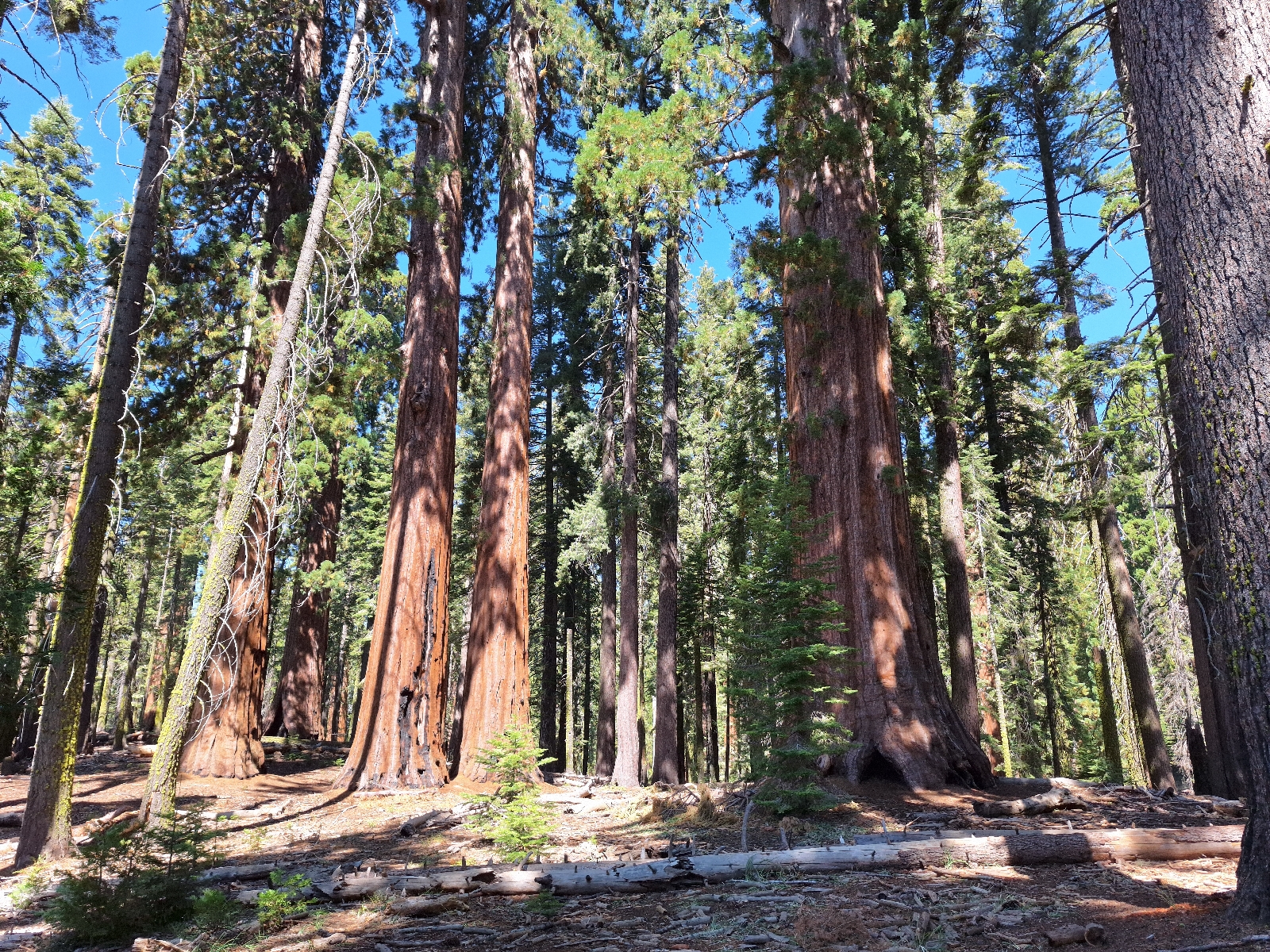On June 30, 1864, Abraham Lincoln signed a bill transferring federal lands in the Yosemite Valley and the Mariposa grove to the State of California "upon the express conditions that the premises shall be held for public use, resort, and recreation." There being no federal agency to manage land for such purposes, the State of California was entrusted with the task. This was the first effort to preserve federal land as a park, marking the foundation of what would become the US's national park system (1).
To limit the environmental impact of vehicles on the Sequoias in the Mariposa Grove at the south end of the park, a shuttle bus runs from a parking lot a few miles south of Wawona to the Grove. A ranger provided a tour beginning here and ending at the Grizzly Sequoia tree. The theme of the tour was the trees and mammals. Squirrels feed on the cones, while chipmunks extract the seeds from the cones and bury them, helping with propagation (2). The endangered Pacific Fisher cat broods in the cavities at the base of the trees, which also house bat colonies.
The trees in the grove are up to 3,000 years old. After about 2,000 years, the trees stopped growing upwards, forming a blunt crown, then spending their energy growing thicker. My wife and I enjoyed trying to determine whether various trees were older or younger than 2,000 years.
After the ranger tour, we proceeded further uphill toward to main grove and Clark's cabin (3). We chatted with a couple from Florida as we walked; they were as dazzled as we were by the gigantic trees. Veering off the main trail onto the Guardian trail at the Clothespin Tree, there were groves filled with many giant sequoia. No-one else was in the area, and the trees rustled in the gentle wind (4). Many young sequoia clustered around a sunlit opening in the canopy, ensuring the next generation of giant sequoia in a couple of thousand years. While we enjoyed the solitude, it seemed a shame that so few people ventured vary far from the shuttle bus stop to enjoy this unique experience.
Reconnecting with the main trail, we summitted at Wawona Point. Descending on a loop route, knocking could be heard, as a white-headed woodpecker searched for bugs in the trees. It was a 7 miles round trip hike with 1,200 feet of vertical gain.
(1) in 1890, the land between Yosemite Valley and the Mariposa Grove was incorporated into the park as well.
(2) The other principal means of sequoia propagation is when the cones are opened by fires.
(3) Galen Clark was the first Guardian of the Yosemite park and Mariposa Grove, and built his cabin in the grove. He was the first to count and measure the sequoia in the Mariposa Grove. Living in the park during most of the last fifty years of his long life, he died in 1910 at age 96 and is buried in the park.
(4) In 2021, stronger winds coming off Mono lake (to the east) toppled a number of the ancient trees.
Rangers describing the trees
Tree felled by Mono Lake winds in 2021
Sequoia growing on a dead Sequoia
The Grizzly tree
Clothespin tree. A colony of bats roosts here during the dayTrail to the upper grove
Clark's Cabin in the upper grove
A plethora of trees in the upper grove
Small cone for the Giant Sequoia
At Wawona Point
Wawona Hotel Porch after dinner


















No comments:
Post a Comment